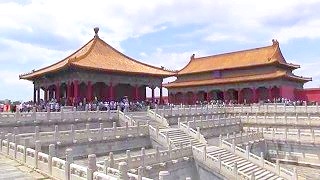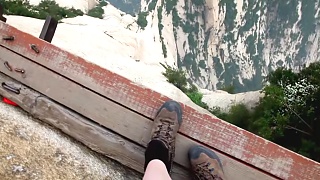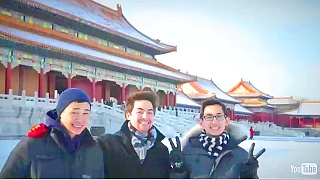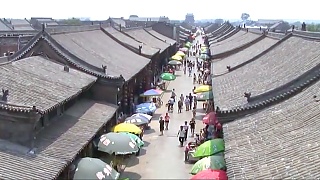
|
Xi'An: 20 Kid-Friendly Places to Visit
Huaqing Palace (华清池 Huáqīng Chí): Historic site with hot springs, gardens, and pavilions.
Xi'an City Wall (西安城墙 Xī'ān Chéngqiáng): Ancient fortification with walkable ramparts and city views.
Shaanxi History Museum (陕西历史博物馆 Shǎnxī Lìshǐ Bówùguǎn): Exhibits on Shaanxi's history, culture, and artifacts.
Xi'an Forest of Stone Steles Museum (西安碑林博物馆 Xī'ān Bēilín Bówùguǎn): Stone tablets with inscriptions, calligraphy, and art.
Giant Wild Goose Pagoda (大雁塔 Dàyàn Tǎ): Buddhist pagoda with cultural relics, artifacts, and a fountain show.
Tang Paradise (大唐芙蓉园 Dàtáng Fúróngyuán): Cultural theme park with Tang dynasty architecture, performances, and gardens.
Xi'an Bell Tower (西安钟楼 Xī'ān Zhōnglóu): Historic tower with a bell, drum performances, and city views.
Xi'an Drum Tower (西安鼓楼 Xī'ān Gǔlóu): Ancient tower with drum performances and city views.
Qujiang Ocean World (曲江海洋世界 Qūjiāng Hǎiyáng Shìjiè): Aquarium with marine life exhibits, shows, and interactive experiences.
Xi'an Qinling Wildlife Park (西安秦岭野生动物园 Xī'ān Qínlǐng Yěshēng Dòngwùyuán): Safari park with animals like pandas, tigers, and elephants.
Da Ci'en Temple (大慈恩寺 Dàcí'ēn Sì): Buddhist temple with a giant Buddha statue and garden.
Tang West Market Museum (大唐西市博物馆 Dàtáng Xīshì Bówùguǎn): Museum with exhibits on the Tang dynasty's market culture.
Xi'an Botanical Garden (西安植物园 Xī'ān Zhíwùyuán): Botanical garden with diverse plant species and scenic landscapes.
Shaanxi Children's Library (陕西省儿童图书馆 Shǎnxī Shěng Értóng Túshūguǎn): Library with children's books, activities, and events.
Xi'an International Horticultural Expo Park (西安国际园林博览园 Xī'ān Guójì Yuánlín Bólǎn Yuán): Park with gardens, exhibitions, and cultural events.
Yongxing Fang Food Street (永兴坊美食街 Yǒngxīng Fāng Měishí Jiē): Street food market with local snacks and specialties.
Xi'an Silk Road Museum (西安丝绸之路博物馆 Xī'ān Sīchóu Zhīlù Bówùguǎn): Museum with exhibits on the Silk Road's history and artifacts.
Xi'an Daming Palace National Heritage Park (西安大明宫国家遗址公园 Xī'ān Dàmíng Gōng Guójiā Yízhǐ Gōngyuán): Park with ruins of the Tang dynasty palace and gardens.
Shaanxi Library (陕西省图书馆 Shǎnxī Shěng Túshūguǎn): Library with a vast collection of books, periodicals, and archives.
Xi'an Museum (西安博物院 Xī'ān Bówùyuàn): Museum with exhibits on Xi'an's history, culture, and archaeology.
Xi'An: 30 More Places to Visit
Xi'an Grand Mosque (西安大清真寺 Xī'ān Dà Qīngzhēnsì): Ancient mosque with Islamic architecture and a tranquil courtyard.
Xi'an Great Mosque (西安大清真寺 Xī'ān Dà Qīngzhēnsì): Historic mosque with traditional Chinese and Islamic architecture.
Xi'an Yongning Gate (西安永宁门 Xī'ān Yǒngníng Mén): Ancient city gate with towers, arches, and historic significance.
Drum Tower Square (西安鼓楼广场 Xī'ān Gǔlóu Guǎngchǎng): Plaza with a water fountain, sculptures, and cultural events.
Xi'an Stele Forest (西安碑林 Xī'ān Bēilín): Collection of stone tablets with inscriptions, calligraphy, and historical texts.
Xi'an Famen Temple (西安法门寺 Xī'ān Fǎmén Sì): Buddhist temple with relics, pagodas, and ancient architecture.
Xi'an Huashan Mountain (西安华山 Xī'ān Huàshān): Scenic mountain with hiking trails, temples, and stunning views.
Big Wild Goose Pagoda North Square (大雁塔北广场 Dàyàn Tǎ Běi Guǎngchǎng): Square with sculptures, fountains, and cultural events.
Gao Grand Courtyard (高家大院 Gāojiā Dàyuàn): Historic mansion with traditional architecture, courtyards, and gardens.
Xingqing Palace Park (兴庆宫公园 Xīngqìng Gōng Gōngyuán): Park with historic ruins, gardens, and cultural exhibitions.
Xi'an Silk Road International Museum (西安丝绸之路国际博物馆 Xī'ān Sīchóu Zhīlù Guójì Bówùguǎn): Museum with exhibits on the Silk Road's history, culture, and trade.
Xi'an Small Wild Goose Pagoda (小雁塔 Xiǎo Yàn Tǎ): Buddhist pagoda with historic relics, artifacts, and gardens.
Shaanxi Provincial Museum of Fine Arts (陕西美术馆 Shǎnxī Měishùguǎn): Museum with Chinese paintings, sculptures, and contemporary art.
Shaanxi History Museum (陕西历史博物馆 Shǎnxī Lìshǐ Bówùguǎn): Exhibits on Shaanxi's history, culture, and artifacts.
Xi'an Tang Art Museum (西安唐艺术博物馆 Xī'ān Táng Yìshù Bówùguǎn): Museum with exhibits on Tang dynasty art, ceramics, and sculpture.
Xi'an Beilin Museum (西安碑林博物馆 Xī'ān Bēilín Bówùguǎn): Museum with stone tablets, calligraphy, and ancient inscriptions.
Xi'an Mosque Food Street (西安回民街美食街 Xī'ān Huímín Jiē Měishí Jiē): Street food market with halal cuisine and local specialties.
Xi'an Qujiang Polar Ocean Park (西安曲江北极洋公园 Xī'ān Qūjiāng Běijí Yáng Gōngyuán): Polar ocean park with marine life exhibits, shows, and activities.
Xi'an Xingjiao Temple (西安兴教寺 Xī'ān Xīngjiào Sì): Buddhist temple with historic relics, statues, and prayer halls.
Xi'an Confucius Temple (西安文庙 Xī'ān Wénmiào): Confucian temple with traditional architecture, gardens, and cultural events.
Xi'an Islamic Food Street (西安回民街 Xī'ān Huímín Jiē): Street food market with halal cuisine, snacks, and traditional dishes.
Xi'an Daming Palace National Heritage Park (西安大明宫国家遗址公园 Xī'ān Dàmíng Gōng Guójiā Yízhǐ Gōngyuán): Park with ruins of the Tang dynasty palace and gardens.
Xi'an Sanyuan Palace (西安三原宫 Xī'ān Sānyuán Gōng): Taoist temple with historic architecture, statues, and gardens.
Xi'an Shuyuanmen Ancient Cultural Street (西安书院门古文化街 Xī'ān Shūyuàn Mén Gǔ Wénhuà Jiē): Historic street with traditional architecture, shops, and cultural activities.
Xi'an Huayan Temple (西安华严寺 Xī'ān Huáyán Sì): Buddhist temple with ancient architecture, sculptures, and gardens.
Xi'an Tang Paradise (西安大唐芙蓉园 Xī'ān Dàtáng Fúróngyuán): Cultural theme park with Tang dynasty architecture, performances, and gardens.
Xi'an Qianling Mausoleum (西安乾陵 Xī'ān Qiánlíng): Imperial tomb site with historic artifacts, sculptures, and mausoleums.
Xi'an Great Mosque (西安大清真寺 Xī'ān Dà Qīngzhēnsì): Historic mosque with traditional Chinese and Islamic architecture.
Xi'an Bell Tower (西安钟楼 Xī'ān Zhōnglóu): Historic tower with a bell, drum performances, and city views.
Xi'an Museum of Modern Art (西安当代美术馆 Xī'ān Dāngdài Měishùguǎn): Museum with contemporary art exhibitions and installations.
|
 Chinese language : ‘Thank you’ and ‘you’re welcome’
Chinese language : ‘Thank you’ and ‘you’re welcome’





